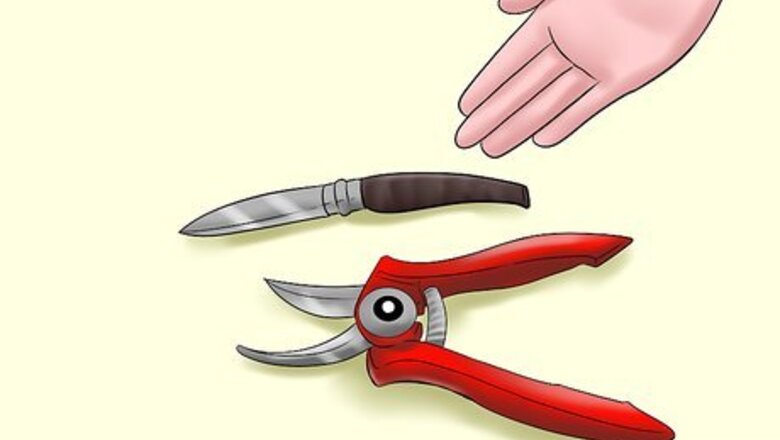
views
Cutting Pansy Flowers for an Arrangement
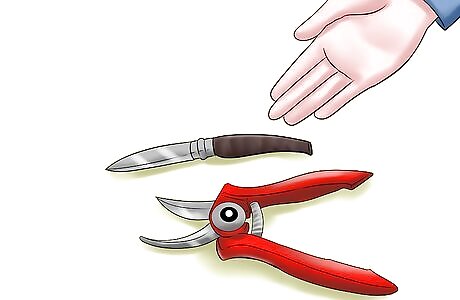
Use a sharp blade to cut your pansies. When cutting from any plant, you should try to use a clean, sharp blade. Sharp blades give a cleaner cut that can help to keep your pansy from becoming infected with a plant disease. If you have hard-stemmed pansies, try to use a sturdy gardening tool, such as a pair of gardening shears. For weak-stemmed pansies, you can use a pair of sharp scissors to make cuts, as the stems of these types of pansies are easier to cut without damaging the plant.Cut from a Pansy Plant Step 1Bullet1 Version 3.jpg
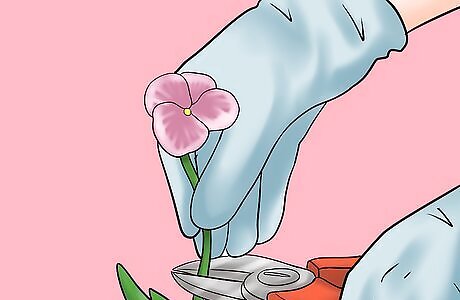
Make the cut. To cut pansy flowers, make the cut when the flower head is just opening up. Try to cut your flowers early in the morning when possible, as this is when the flowers will be the freshest. To cut the flower: Use a sharp blade, as described in the previous step, to cut the stem to about a quarter of an inch above the next leaf set, below the leaf set that you are removing with the stem. A leaf set is a pair of leaves growing along a stem. Many people like to keep at least one leaf set on the stem of their cut flower.Cut from a Pansy Plant Step 2Bullet1 Version 3.jpg
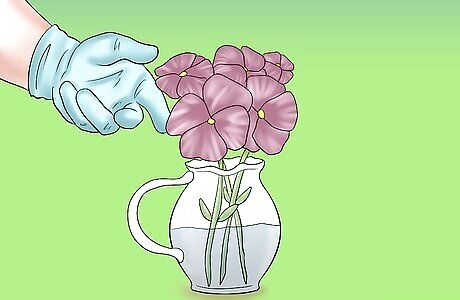
Keep your flowers healthy after they have been cut. Pick out a short vase to accommodate the pansies’ short stems. Fill the vase with clean, cold water. Make sure that the vase is about two-thirds full of the water. Place the cut pansy flowers into the vase. Change the water in the vase every other day to make your cut pansies last as long as possible.Cut from a Pansy Plant Step 3Bullet1 Version 3.jpg

Consider making centerpieces out of your cut pansies. Because of the pansies short stems, people do not often think of them as vase flowers, even though they do just fine in a vase. While keeping pansies alive in a vase is covered in the previous step, you can also make beautiful centerpieces with the cut flowers. To do this: Fill a bowl with cold water. Cut the pansy stems off so that you only have the flower heads (or blooms) left. Float the flower heads in the water.Cut from a Pansy Plant Step 4Bullet1 Version 3.jpg While flower heads tend to wilt faster than regular cut flowers, they will make a very pretty centerpiece for a couple of days.Cut from a Pansy Plant Step 4Bullet2 Version 3.jpg
Cutting Back Your Pansies to Keep Them Healthy
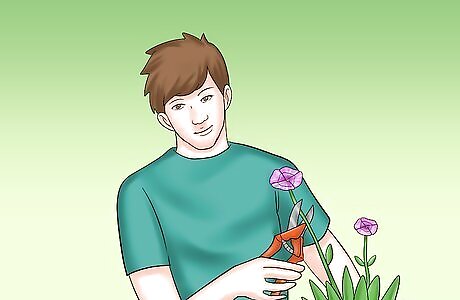
Cut your pansies to keep them healthy. Cut your pansy stems back to about two inches in height. Try to make the cut about a quarter of an inch above the leaf set closest to this two-inch length. You can compost the cut foliage unless it appears mildewed or otherwise diseased. Dig out and discard any plants that show signs of disease. This will be covered more fully in the next step.Cut from a Pansy Plant Step 5Bullet1 Version 3.jpg
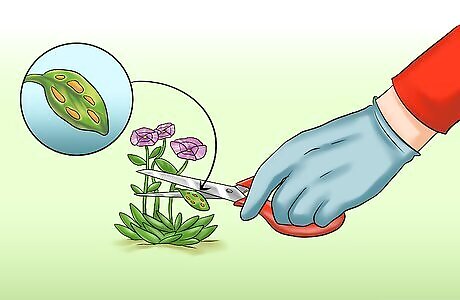
Cut away diseased parts of the plant. Try to remove all yellowing, diseased or withered foliage to improve the plant’s appearance and hopefully stop the spread of disease. Any plants where disease can’t be contained should be dug up and thrown away to prevent them from infecting others. As mentioned previously, avoid composting diseased plant matter as the compost can infect other plants.Cut from a Pansy Plant Step 6Bullet1 Version 3.jpg
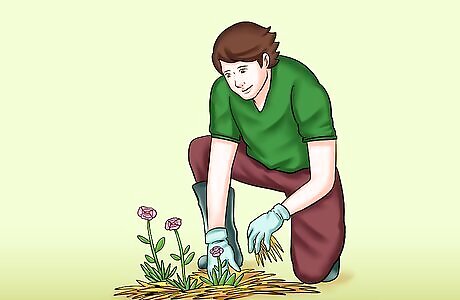
Help your pansies survive very cold winters with some mulch. Some gardeners in milder climates will see their pansies survive the winter to re-bloom in the springtime without the help of mulch. If you live in a very cold climate, diligently protecting and mulching your plants can help them survive the coldest months. Some gardeners protect plants with straw or a cover of evergreen tree branches to help them survive the winter. If successful, the pansies should bloom again in the early spring.Cut from a Pansy Plant Step 7Bullet1 Version 3.jpg
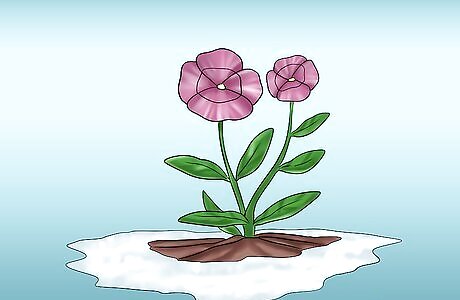
Look for new growth after you have cut your pansies back. New growth should hopefully begin to appear on your pansy plant and it should bloom again until the first frost arrives.
Cutting Back Tall Pansies
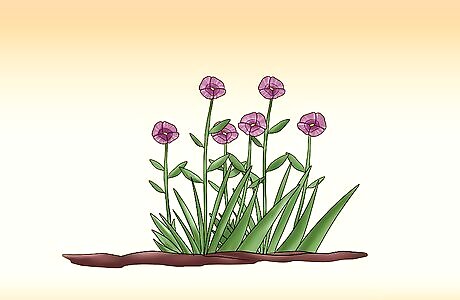
Understand why a pansy might become too ‘leggy’. Pansies are generally a low-growing plant and fairly compact. However, if they are grown in the shade, they are more likely to grow tall and become a bit ‘leggy’. If your pansies are too ‘leggy’ they can look straggly and flop over, which generally doesn’t look as good, particularly if the flowers become hidden. Your pansy plant can also become leggy if they are fed too often, so try to stick to monthly fertilizing treatments.Cut from a Pansy Plant Step 9Bullet1 Version 3.jpg
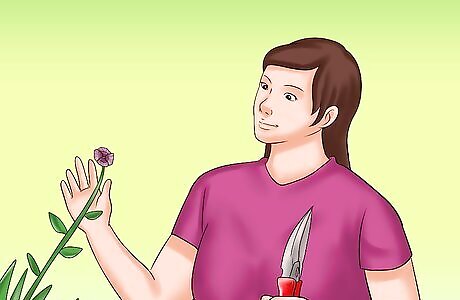
Determine how long you would like your pansy stems to be. To deal with a leggy pansy stem, consider the length you would prefer the stem to be. Once you’ve determined the length you would like, find the nearest leaf set to your desired length. Cut back to about a quarter of an inch above the leaf set. For most pansy varieties you can aim to cut the leggy parts of the plant back to about four inches of stem length (or the leaf set closest to this height).Cut from a Pansy Plant Step 10Bullet1 Version 3.jpg

Consider cutting back the whole ‘leggy’ plant. If the whole plant is leggy, you may want to cut the whole stem back to a stem length of about four inches. Try to make the cut just above the leaf set closest to this four-inch length. When the plant grows back, it should grow back more compactly.Cut from a Pansy Plant Step 11Bullet1 Version 3.jpg
Caring for Pansies
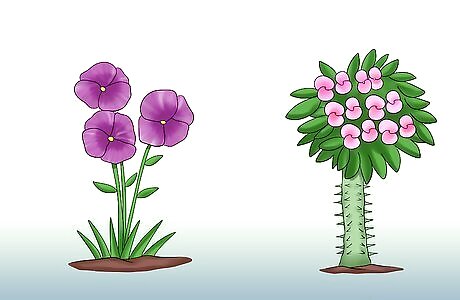
Help your pansies to behave more like perennials if so desired. Although most gardeners treat pansies as annuals (plants that only live for one year) these plants actually have a slightly longer lifespan than that. To get your pansies to behave more like perennials than annuals: Plant them in a sunny spot. Although pansies prefer a cooler temperature, they like direct sunlight. Your plant is more likely to produce larger and more plentiful flowers if it gets the full sun it loves.Cut from a Pansy Plant Step 12Bullet1 Version 3.jpg Consider the soil where you are planting your pansies.These plants aren’t especially particular about soil type but, like most plants, they prefer a well-draining, rich soil.Cut from a Pansy Plant Step 12Bullet2 Version 3.jpg
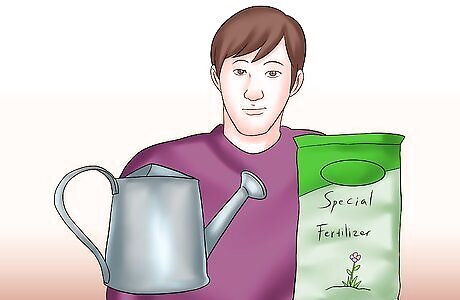
Make sure to water and fertilize your pansies each month. An all-purpose water-soluble feed is a good choice for pansy fertilizer. You’ll also want to keep your plants well supplied with water during dry periods. To know when to water your plants, check to see how dry the ground around them is. You should water your plants when the soil is dry to the touch.Cut from a Pansy Plant Step 13Bullet1 Version 3.jpg
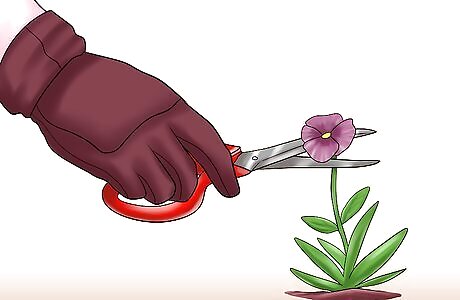
’Deadhead’ your pansies. Like most flowering plants, removing dead flower heads and emerging seed heads can help to prolong the flowering period. ‘Deadhead’ withered flower heads by snipping the stem away just above the next leaf set. Remember to use a clean sharp blade to do this. Remove seed pods as they develop. Seed production draws energy away from flower production so you’ll get more flowers if you remove the seed pods.Cut from a Pansy Plant Step 14Bullet1 Version 3.jpg
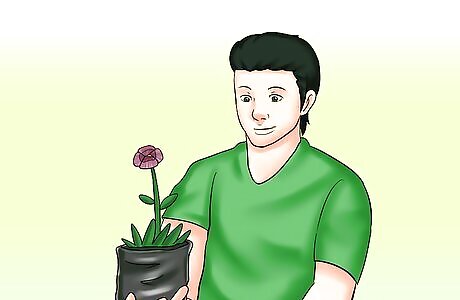
Help your pansy to flourish, even in a hot climate. Hot weather may cause your pansy to look lackluster. If you’re in a warm climate and expect a hot summer, move your pansy into a cooler location out of the sun, if you can, for the next few months.




















Comments
0 comment